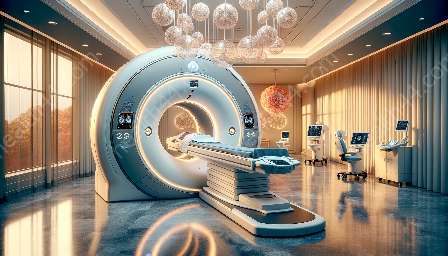Medical imaging is a crucial aspect of modern healthcare, enabling the visualization of internal structures and functions for diagnosis and treatment. Within this field, microscopes play an essential role, particularly in the development and operation of medical imaging devices. This article explores the fascinating intersection of microscopes, medical imaging, and other medical devices and equipment, shedding light on their interconnections and significance in healthcare.
The Role of Microscopes in Medical Imaging
Microscopes are fundamental tools in medical imaging, allowing healthcare professionals to visualize and analyze samples at the cellular and molecular levels. In the context of medical imaging devices, microscopes are utilized in various applications, such as:
- Pathology: Microscopes are used to examine tissue samples and identify abnormal cellular structures, aiding in the diagnosis of diseases such as cancer and infectious conditions.
- Histology: Microscopic examination of tissue sections provides crucial insights for understanding the morphological characteristics of organs and tissues, contributing to the interpretation of medical imaging results.
- Hematology: Blood smears and bone marrow samples are analyzed under microscopes to assess cellular composition, identifying abnormalities that may indicate hematological disorders.
- Microbiology: Microscopic investigation of microorganisms, such as bacteria and fungi, is integral to the diagnosis of infectious diseases and monitoring treatment efficacy.
- Research and Development: Microscopes are instrumental in the development of new imaging technologies and techniques, enabling scientists to visualize biological processes and structures in unprecedented detail.
Integration with Medical Imaging Devices
Microscopes are integrated into various medical imaging devices to enhance their capabilities and provide detailed insights into biological samples. For instance, advanced microscopy techniques, including confocal microscopy and multiphoton imaging, are incorporated into imaging systems to visualize living cells and tissues with exceptional clarity and precision. Additionally, digital imaging technologies enable the capture and analysis of microscopic images, facilitating the seamless integration of microscopic observations with macroscopic medical imaging modalities.
Medical Devices & Equipment
Within the broader context of medical devices and equipment, microscopes play a multifaceted role beyond medical imaging. They are employed in diverse healthcare settings and applications, including:
- Surgical Microscopes: These specialized microscopes are used in surgical procedures to provide magnified, illuminated views of the surgical field, enhancing precision and accuracy during operations.
- Digital Pathology Systems: Advanced digital microscopy solutions are transforming pathology practice by enabling the digitization and analysis of histological slides, facilitating remote diagnosis and collaborative consultations.
- Point-of-Care Diagnostics: Portable and user-friendly microscopes are utilized for rapid on-site analysis of biological specimens, supporting point-of-care testing and diagnostics in resource-limited environments.
- Biomedical Research: Microscopes are indispensable tools for biomedical research, empowering scientists to investigate cellular and molecular mechanisms underlying diseases and develop novel therapeutic strategies.
- Quality Control: In the manufacturing of medical devices and pharmaceutical products, microscopes are employed for quality assurance and inspection to ensure compliance with stringent regulatory standards.
The Future of Microscopic Imaging in Healthcare
The convergence of microscopes with medical imaging devices and other medical equipment continues to drive advancements in healthcare. Emerging technologies, such as super-resolution microscopy and artificial intelligence-powered image analysis, are poised to revolutionize medical imaging and diagnostics, offering unprecedented insights into the intricacies of biological systems. As the field of medical imaging evolves, the role of microscopes as essential tools for visualizing the microscopic realm and advancing healthcare innovation remains steadfast.


